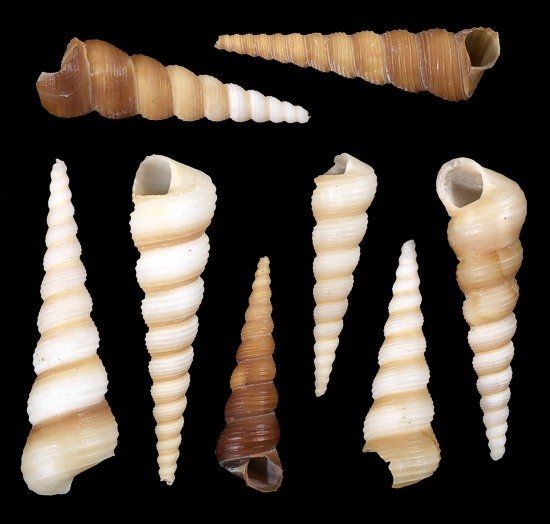TURRITELLA SHELLS KNOWLEDGE BASE
Turritella Shells
The Turritellidae family, encompassing Deep Sea Augers and True Augers, they are known for shells that are elongated and slender, resembling screws or augers, similar to those of the Terebridae family. However, this resemblance is superficial. Turritella shells are quite variable in shape, typically thin, rough, and lack luster. They are easily identified by their rounded openings and the distinct absence of a siphonal canal at the front of the aperture. Additionally, these shells feature a very tall spire, numerous convex whorls, no umbilical opening, no folds on the columnella, and a horny, flexible operculum supported by bristles. This operculum can retract deeply into the shell when the creature withdraws.
These filter-feeding mollusks burrow into sandy seabeds and subsist on dust-like detritus particles descending to the ocean floor. In contrast to the terebra mollusk, turritellas do not possess the venomous dart mechanism required for a carnivorous lifestyle. Instead, many turritellas utilize their gills to sift fine food particles, similar to how clams feed.
Scientific classification
Domain: Eukaryota
Kingdom: Animalia
Phylum: Mollusca
Class: Gastropoda
Subclass: Caenogastropoda
Superfamily: Cerithioidea
Family: Turritellidae
Genus: Turritella
Lamarck, 1799
(REF: Shiladri S. Das; Sandip Saha; Subhendu Bardhan; Sumanta Mallick; Warren D. Allmon (2018). "The oldest turritelline gastropods: from the Oxfordian (Upper Jurassic) of Kutch, India". Journal of Paleontology. 92)(REF: Lamarck J.-B. (1799). Mém. Soc. Hist. nat. Paris, 74)(REF: Vos, C.; Gofas, S. (2013). Turritella Lamarck, 1799. Accessed through: World
